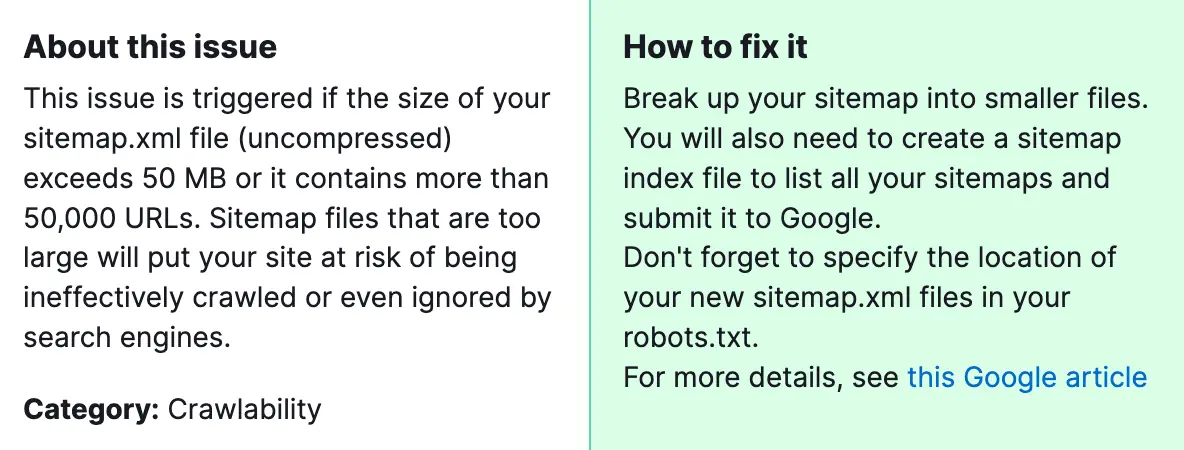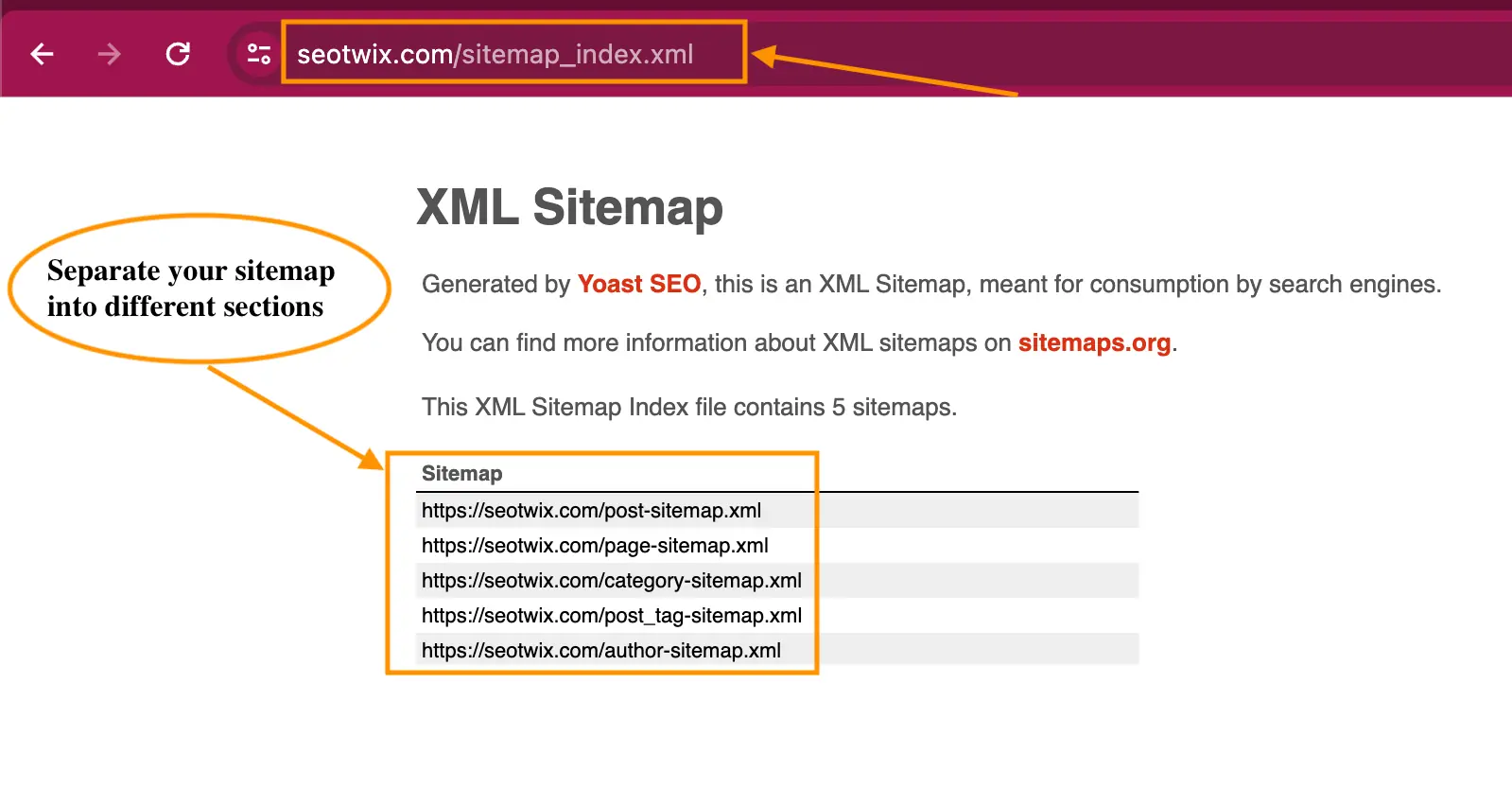If you have faced the error: “Sitemap.xml files are too large.” This message pops up when your website’s sitemap file exceeds the size limit recommended by search engines. Let’s break down what this means, why it’s important to fix it, and how you can do just that.
Your sitemap is essentially a map of your website that you give to search engines. It helps them find and understand all the pages on your site. Think of it as a table of contents for your website. When your sitemap file is too big, it can slow down search engines trying to crawl (or read through) your site. This could lead to some pages not being indexed (or recognized) by search engines, which means they won’t show up in search results as they should. Obviously, that’s not what you want.

Search engines have a lot on their plate, scanning millions of websites constantly. They set size limits on sitemap files to keep things running smoothly. The general rule of thumb is that a sitemap file should not be larger than 50MB and should not list more than 50,000 URLs. Anything beyond this can be a struggle for search engines to handle efficiently.
How to Fix the Issue “Sitemap.xml files are too large”
1) Split Your Sitemap

If your sitemap is too big, consider splitting it into smaller, more manageable files. You can have separate sitemaps for different sections of your website, like one for blog posts, another for product pages, and so on. This makes it easier for search engines to process. Here are some sitemap examples.
2) Remove Unnecessary URLs
Sometimes, a sitemap includes pages that don’t need to be indexed, like duplicate pages or pages with little to no original content (e.g., printer-friendly pages). Removing these can reduce your sitemap size.
3) Update Your Robots.txt File
After splitting your sitemap, make sure to update your robots.txt file. This is the file that tells search engines where to find your sitemap. You’ll want to list the URLs of all the new, smaller sitemaps you’ve created.
4) Regularly Maintain Your Sitemap
Keep your sitemap lean and mean by regularly removing any broken links (to pages that no longer exist) and keeping it updated with new content. This not only helps with size but also ensures that search engines are getting the most current picture of your site.
By keeping your sitemap files within the recommended size, you make it easier for search engines to crawl and index your site, which is crucial for showing up in search results. Regular maintenance of your sitemap can save you from running into the same issue down the road and helps ensure your website remains friendly to both users and search engines.




